Aviation Maintenance Inspectors are qualified individuals who are charged by an Approved Maintenance Organization (AMO) to assure / ensure an aeronautical product is fit and safe according to the standards set by the designer, operator and/or manufacturer of the aeronautical product.
All tasks within this Occupational Standard are descriptive of aviation maintenance inspections performed in the aerospace industry across Canada.
Tasks described are applicable to inspections performed on aircraft and in repair and overhaul shops. Every attempt has been made to link the work performed by the aviation maintenance inspector to ISO requirements and aviation regulations.
In some organizations, in-coming and dispatch inspections are performed by individuals other than the aviation maintenance inspectors. Some functions are specializations such as bay inspections, strip inspections, electrical, mechanical and instrument inspections.
Certification Requirements
To qualify for certification with CCAA, the applicant must possess the necessary knowledge and skills.
Also, applicants must demonstrate one of the following:
- One (1) year experience performing aviation maintenance inspections on aeronautical products in addition to formalized aviation related trade qualification such as CCAA certification or an AME licence; or
- Five (5) years’ experience performing aviation maintenance inspections on aeronautical products. The tasks in the logbook were made as generic as possible to accommodate the largest amount of work environments and equipment / tools but do not necessarily cover all tasks performed by individuals.
Tasks Common to Most Aviation Maintenance Inspectors
(note that sub-tasks for each task are not shown below)
Block A — Safety
Task 1 – Demonstrates Safe Working Practices and Techniques
Task 2 – Select Required Personal Protective Equipment and Other Safety Equipment
Task 3 – Verify Condition of Safety Devices
Task 4 – Reviews Safe Work Practices
Block B — Handling
Task 5 – Identify Aeronautical Product Handling Characteristics
Block C — Inspection, Measuring and Test Equipment
Task 6 – Select Appropriate Tools
Task 7 – Check Condition of Tools
Task 8 – Write Technical Reports
Block D — Communications
Task 9 – Relay Information to Other Departments
Task 10 – Consult with Other Departments
Task 11 – Interact with Customer
Block E — Inspection Procedures
Task 12 – Develop New Inspection Procedures
Task 13 – Modify Existing Procedures
Task 14 – Implement Procedures
Block F — Documentation
Task 15 – Generate / Write Up Documentation
Task 16 – Research Technical Data
Task 17 – Interpret Various Forms of Documentation
Task 18 – Conduct Pre-and/or Post-Documentation Audit
Task 19 – Archive Documentation
Block G — In-Coming Inspection
Task 20 – Review Documentation for Conformance to Standards
Task 21 – Compare Documentation to Aeronautical Product
Task 22 – Perform Measurements on Parts to be Put into System for Rework or Repair
Task 23 – Accept / Reject Aeronautical Products
Task 24 – Record In-Coming Inspection Information
Task 25 – Complete In-Coming Inspection Process
Block H — In-Process Inspection
Task 26 – Reference Scope of Work
Task 27 – Reference Technical Documentation
Task 28 – Prepare Aeronautical Products for Inspection
Task 29 – Conduct In-Process Inspection
Block I — Rework/Repair Processes
Task 30 – Generate Rework / Repair Requests
Task 31 – Verify Completion of Rework / Repair Request
Task 32 – Stamp-off Inspection
Block J — Final/Dispatch Inspection
Task 33 – Review Documentation
Task 34 – Perform Final Inspection
Task 35 – Generate Airworthiness Documents
